Exploring the depth of X-ray explosives and drug detection technology
In recent years, various types of terrorist incidents have occurred worldwide and public security has become the focus of attention of the international community. In order to deal with increasingly rampant terrorist activities, governments of all countries have issued corresponding policies, including strengthening security measures for public places such as airports, stations, and docks, and have focused on strengthening the inspection of explosives, drugs, and other contraband. However, due to the large variety of explosives and the wide variety of material forms, it is undoubtedly necessary to increase the technical requirements for security inspection equipment by accurately and quickly checking out contraband such as explosives.
At present, international research on detection technologies for explosives and other contraband products mainly focuses on X-ray detection technology, neutron detection technology, electromagnetic measurement technology, and vapor particle detection technology. Among them, X-ray detection technology is a relatively mature and widely used technology, mainly including X-ray transmission, dual-energy X-ray detection, X-ray scattering, X-ray CT and so on. These technologies implement the inspection of prohibited items by extracting the characteristic physical quantity information of the tested object.
The characteristic physical quantity of the extracted sample is mainly the density (Ï) and effective atomic number (Zeff) information of the sample. In theory, the density and effective atomic number of a known substance can accurately determine the type of substance. However, there are various shortcomings and deficiencies in various current security inspection methods. Comparing various security inspection methods and realizing multi-level inspection are commonly used methods in security inspection. This article elaborates the basic principles of X-ray security inspection technology and introduces the commonly used X-ray security inspection methods.
principle
X-ray radiation is a kind of high-energy electromagnetic radiation. It is produced by high-energy electrons in the material for deceleration or by the transition of atomic orbital electrons. Because of its strong penetrability, it can penetrate packages, luggage, and other items. Comes as a radiation source for safety inspections.
After X-ray generation, the fan-shaped beam formed by the collimator illuminates the object to be detected. After interaction with the object to be inspected, part of the energy of the fan beam is absorbed by the substance, and part of the energy is scattered by the substance due to different types of Since the material absorbs and scatters X-rays differently, the transmitted X-ray beam has different energy when it reaches the detector. The detector converts the detected X-ray energy into carriers and distinguishes the changes in X-ray energy within a small size range. After processing, the energy received by the detector is displayed in gray-scale images. After processing by the computer image technology, the dangerous goods and prohibited articles in the baggage package can be checked out.
Commonly used X-ray safety inspection technology
The single-energy X-ray X-ray transmission method distinguishes different X-ray attenuation coefficients of different substances, and simply measures the incident X-ray energy I0 and the outgoing X-ray energy I to obtain a product of μt. The use of this method allows for clear imaging of substances with a high effective atomic number (eg, metals, etc.), and has a good inspection effect, but cannot be detected for contraband (such as explosives) hidden behind substances with a large absorption coefficient. The ability is very limited.
The dual-energy X-ray method further develops a dual-energy X-ray detection technique, which can obtain information on the effective atomic number of the test object, and can separate the organic matter from the inorganic matter.
By using high-energy and low-energy X-rays to irradiate substances, the ratio K of the attenuation of the high-energy X-rays to the attenuation of the low-energy X-rays is measured, thereby extracting the effective atomic number Zeff of the test object. The dual-energy X-ray detection method can obtain the information of the effective atomic number of the test object, and can separate the organic matter from the inorganic substances, such as separating the common inorganic substances such as glass in the baggage, thereby greatly improving the detection accuracy. The detection speed is quick and the cost is low, becoming the mainstream product of security inspection equipment. However, the dual-energy X-ray detection technology still has difficulties in distinguishing the organic substances (such as food, plastics, fabrics and other living organics) allowed in the baggage and the prohibited organic substances (such as TNT, C4, heroin, cocaine, etc.).
The X-ray backscattering method has developed an X-ray backscattering technique in view of the fact that prohibited items are mostly hidden in the outer layer of the baggage and in the dark compartments. It is a relatively new X-ray security inspection technology. It mainly detects the Compton scattering signal of matter to X-rays. Therefore, it has a good inspection effect on articles with low Zeff, high density and being placed on the outer layer of baggage. Compared with the dual-energy X-ray inspection method, the X-ray backscattering method obtains more abundant and sensitive information on the outer layer of baggage, which can further improve the inspection accuracy, especially for plastic explosives with lower Zeff and higher density. well.
In recent years, X-ray backscatter technology has also been applied to the safety inspection of large items. The use of vehicles to smuggle explosives, drugs, and smuggling of people is often used to transform vehicles and to create thick grids, sandwiches, etc., because iron plates absorb X-rays more strongly, and explosives, drugs, etc. hidden behind heavy iron plates are used. Organics are obscured by traditional X-ray inspection and are difficult to find. However, the low effective atomic number of organic matter (drugs, explosives, etc.) has a strong X-ray scattering effect, and X-ray backscattering methods can be used to detect low-atomic-number organics (drugs, explosives, etc.), especially when The organic matter in the shallow area (sandwich, etc.) of the test object detects strong scattering signals. Figure 1 shows the multi-view X-ray backscattered image of the vehicle under inspection. It can clearly see the contraband hidden in the front and rear compartments of the car and the smugglers hidden in the roof sandwich. However, the X-ray backscattering method still cannot obtain effective atomic number and density information at the same time, and it cannot check the internal and partial plastic explosives in baggage.
In the security check, due to the presence of complicated and overlapped, blocked, and mixed articles in the packaged baggage, it is difficult for the security inspection. At present, the combination of X-ray dual energy and backscattering technology can provide security inspectors with more information to improve inspection accuracy, improve detection accuracy, and reduce false alarm rate. Has been applied to the container inspection, vehicle inspection, baggage inspection, human inspection and other security inspections.
in conclusion
At present, a variety of X-ray detection technologies are widely used in various fields of security inspections, but there are no security inspection products that can independently provide effective atomic number and density information of substances. Each detection technology has certain advantages, limitations and pertinence. In short, a variety of technology integration and multi-level inspection is one of the directions for the development of security inspection equipment.
Philizon focus on Innovative,High efficiency & Intelligent control Freshwater Aquarium Lighting for aquarium,Fish tank, Home Fisheries,Aquaculture, etc.
Key Features
1.The lifespan is over 50000 hours,low maintenance costs.
2.Energy conservation,saving over 80% energy than the traditional HPS.
3.High light efficiency,90% of the light will be absorbed by the aquatic plants,while just 8%-10% to the HPS.
4.Build-in cooling system,could solve the heat dissipation excellently.
5.Built-in power supply, CE approved, No setup required, just simpler and safer plugs directly into AC85V-264V, no reflector & ballast needed.
Aquarium Led lighting
2 Manual dimmers for White, Blue change the intensity of lighting
Simulates the sunset and sunrise
55pcs 3w leds offer lighting to tank effectively
Adjustable kits, detachable cords
Our Freshwater Aquarium Lighting is popular in led market,cause its elegant outlook and its high quality and competitive price.
Item Display
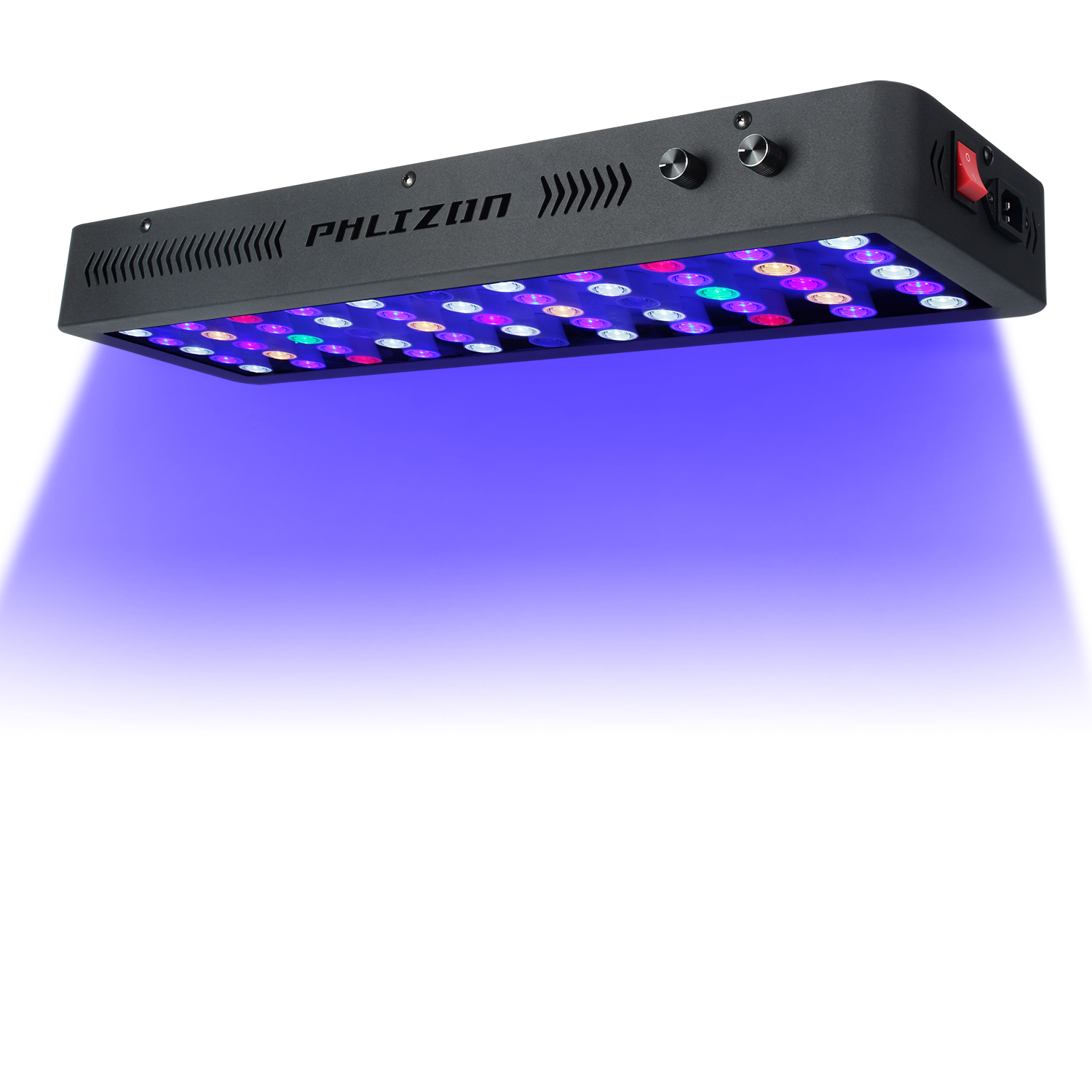
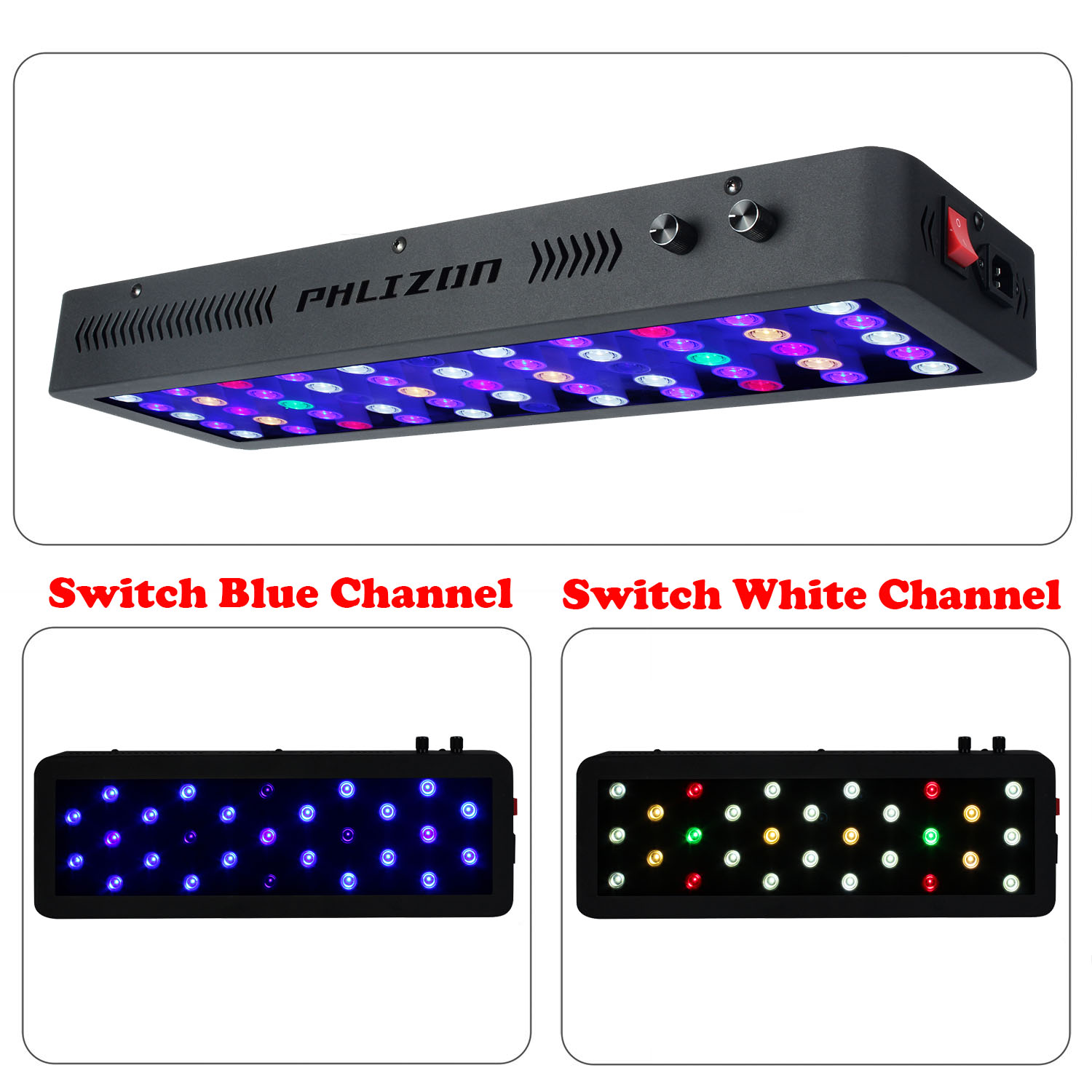
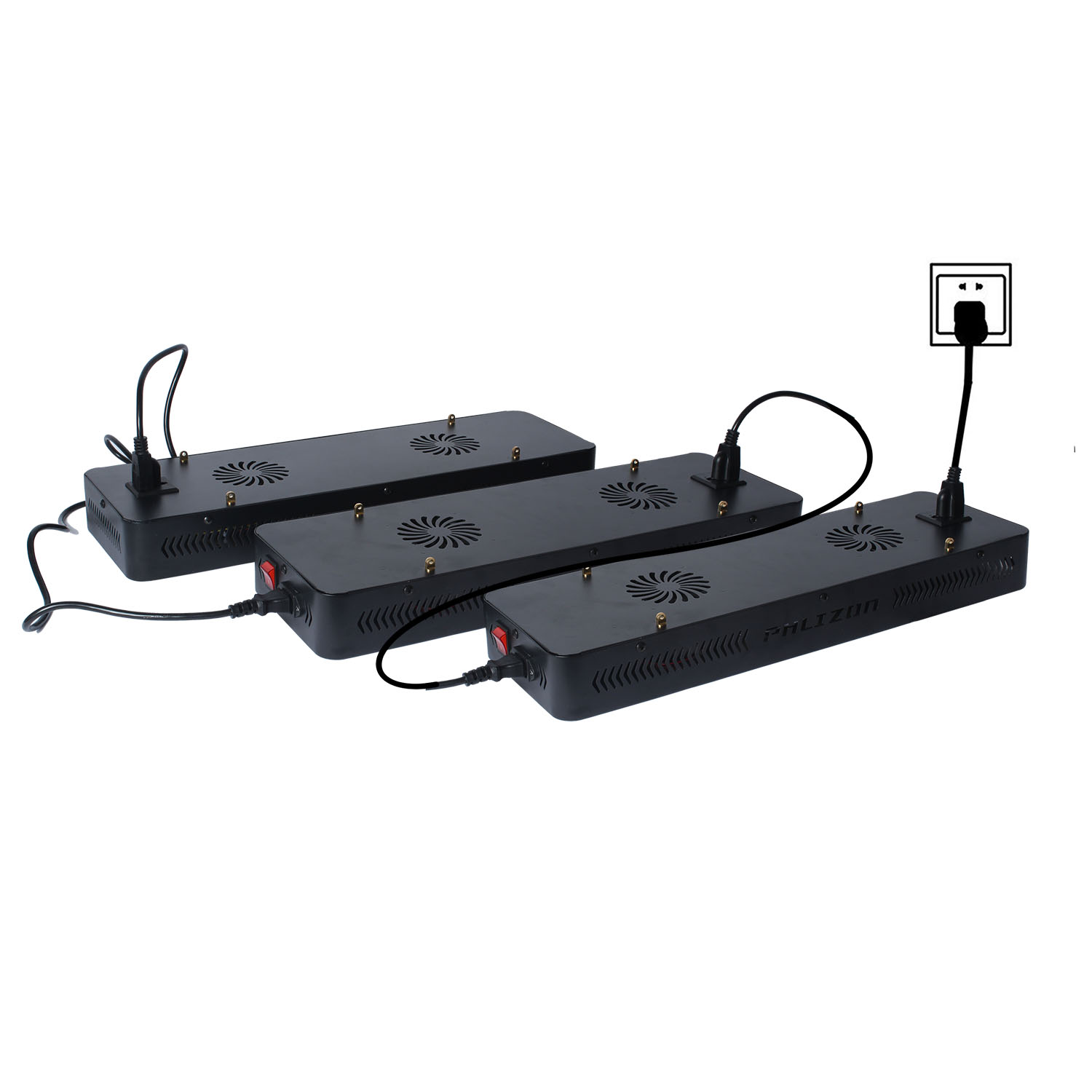
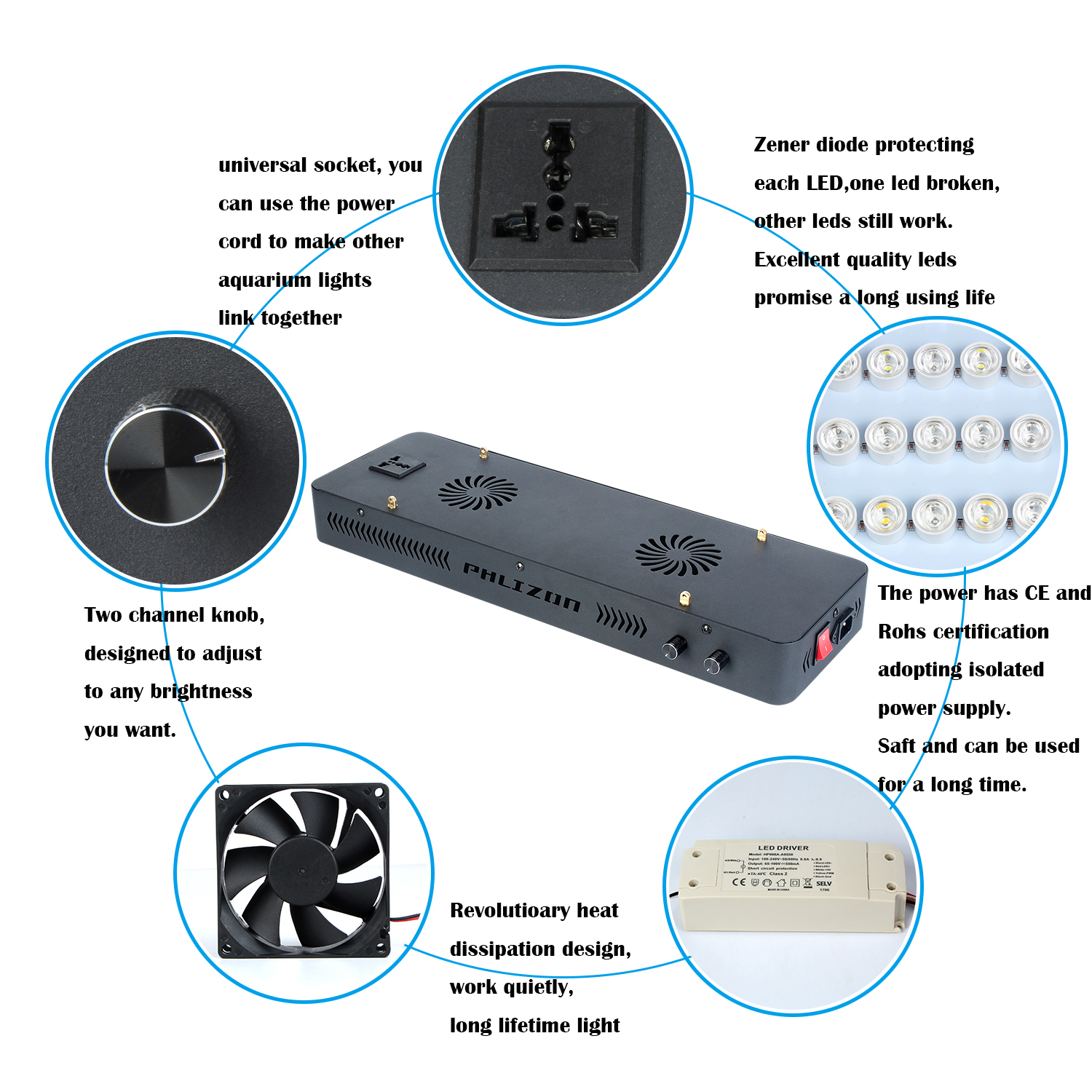
Package Include
1 X Free Hanging Kit
1X Free Power Cord
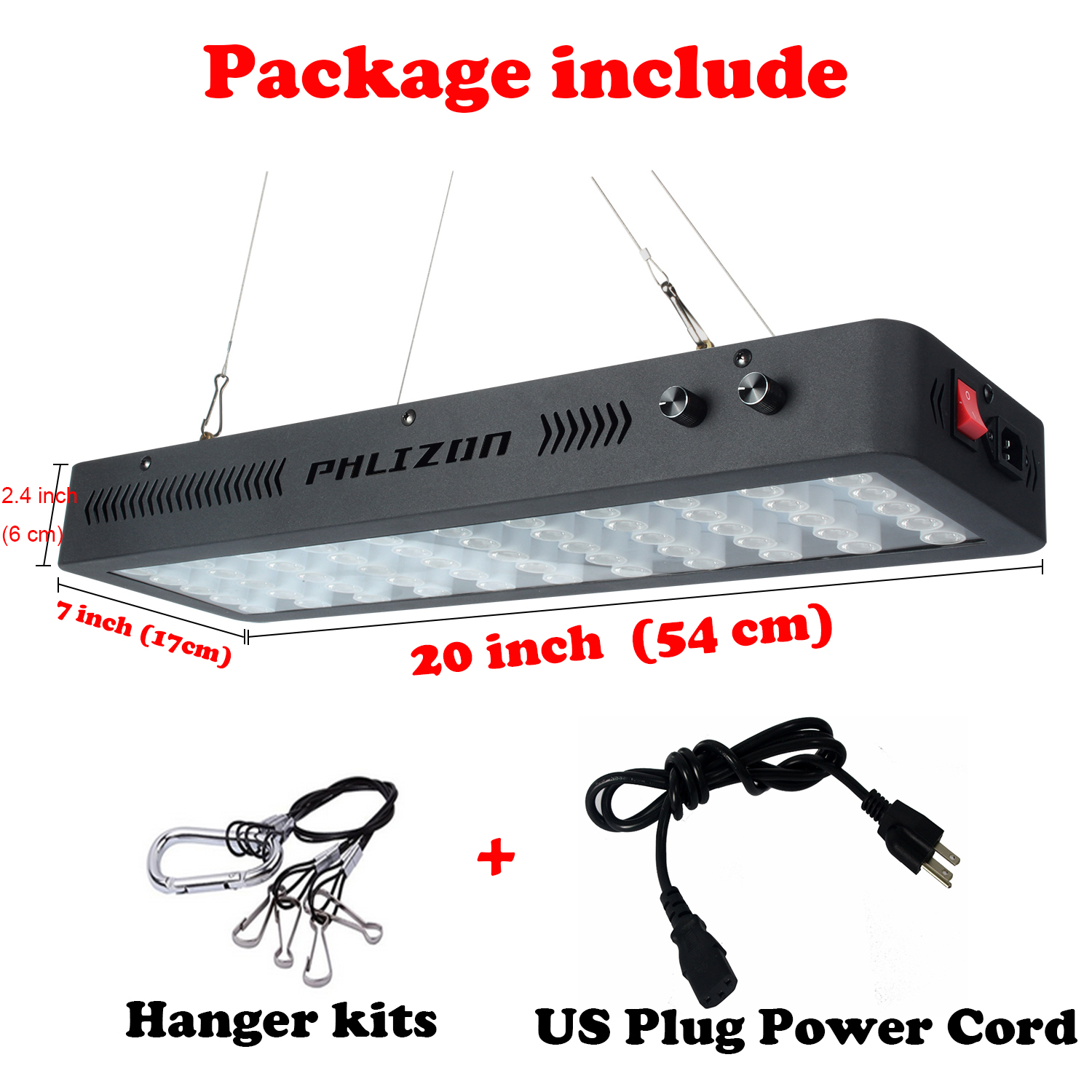
All the lamps have passed strict quality examination and are packed carefully before shipping.In order that our customers get high quality lamps,we attach importance to every details.
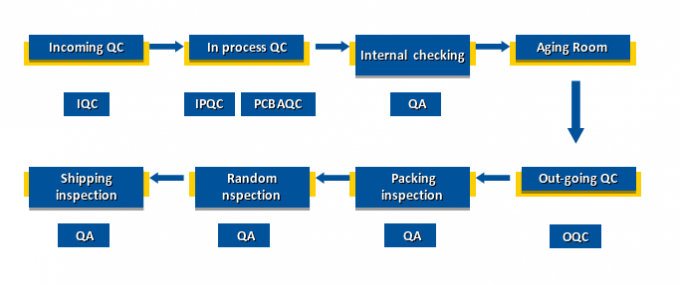
Application
1. coral reef lighting,fish tank lighting,coral reef tank lighting
2. aquarium lighting,aquarium art,aquarium shop,aquarim centre
3. fish bowl lighting,fish lighting,freshwater lighting,saltwater lighting
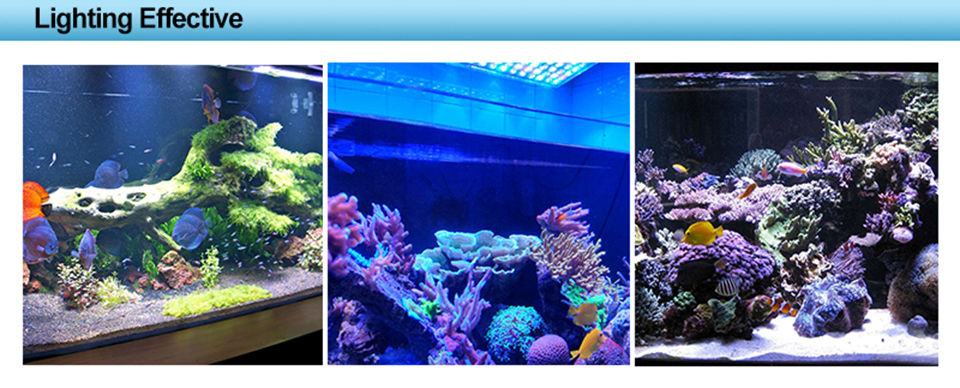
Company Info
Philizon Lighting is dedicated to provide high quality and durable lighting product for customer with very competitive price.Our products mainly foucs on LED Grow Lights and led Aquarium Light.The equipment and materials to produce hydroponics led Grow Light and Freshwater Aquarium Lighting fixctures imported from Taiwan, Japan, Korea and Unites States, such as automatic SMT machine, reflowsoldering machine,all kinds of electric test equipment, large integrating sphere and such sorts of productionand R&D equipment.
Clients with Fair
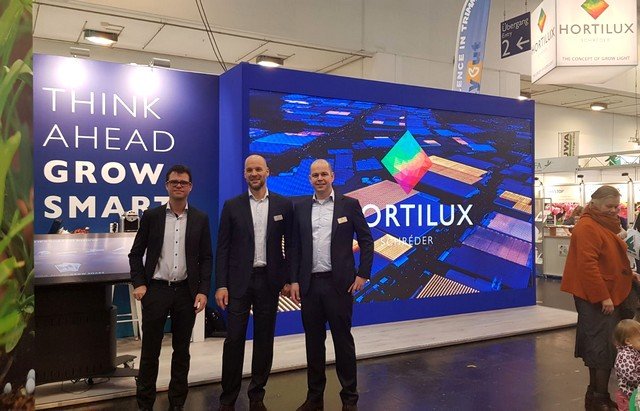
Trade Terms
Payment: T/T, L/C, Paypal, 30% deposits before production, 70% balance to be paid before deliverying(Western Union are welcome)
Sample will be delivered within 7 working days.
Discounts are offered based on order quanlityes.
MOQ:sample order are acceptable
Delivery ways:DHL,UPS,FedEx,TNT, door to door,by sea,by air,etc.
Warmly welcom to take a visit on our factory at any time and we will pick you up at the airport or hotel in Shenzhen.
Freshwater Aquarium Lighting,Freshwater Led Aquarium Light,Freshwater Led Aquarium Lights,Freshwater Aquarium Lights
Shenzhen Phlizon Technology Co.,Ltd. , https://www.szledplantgrowlights.com
